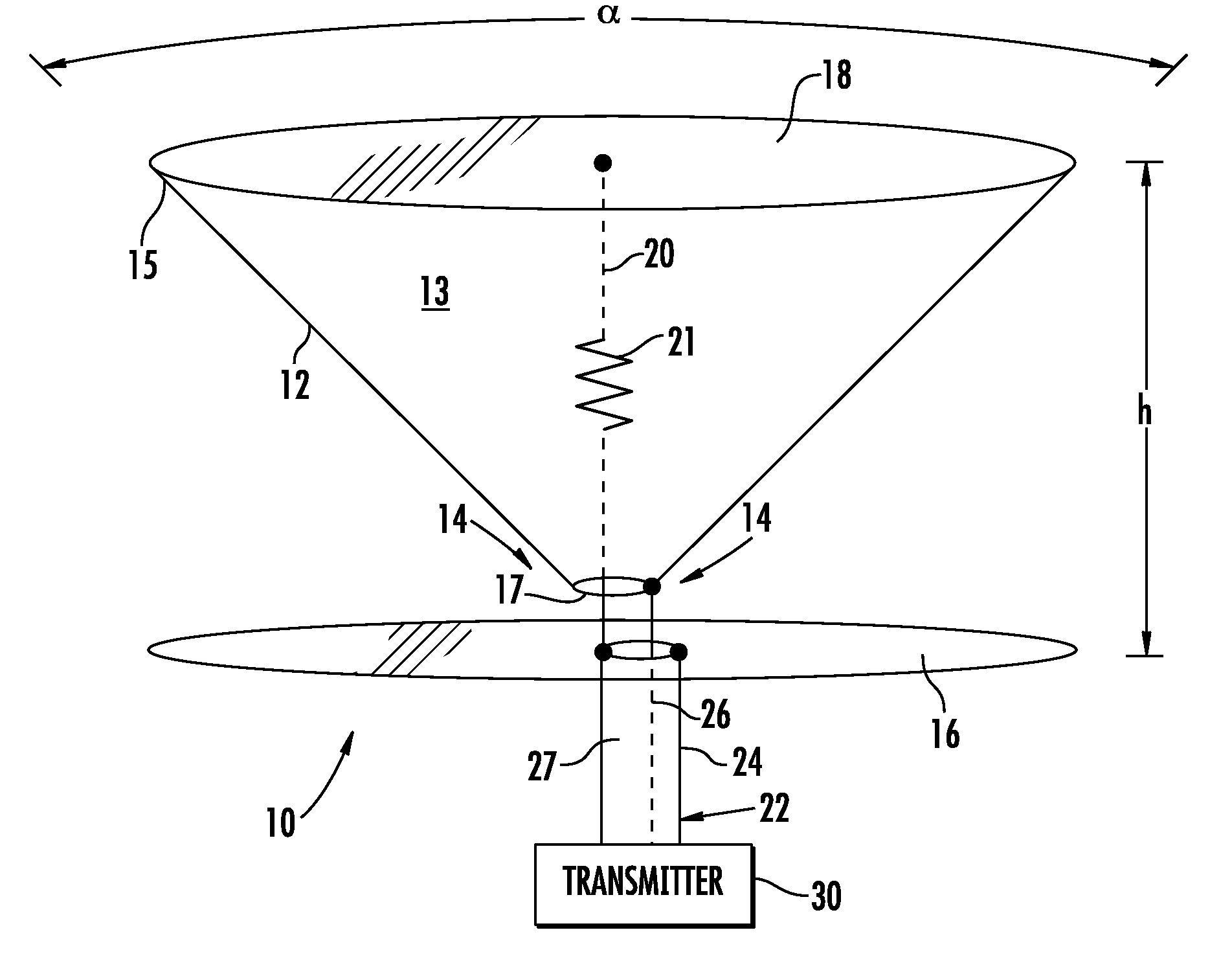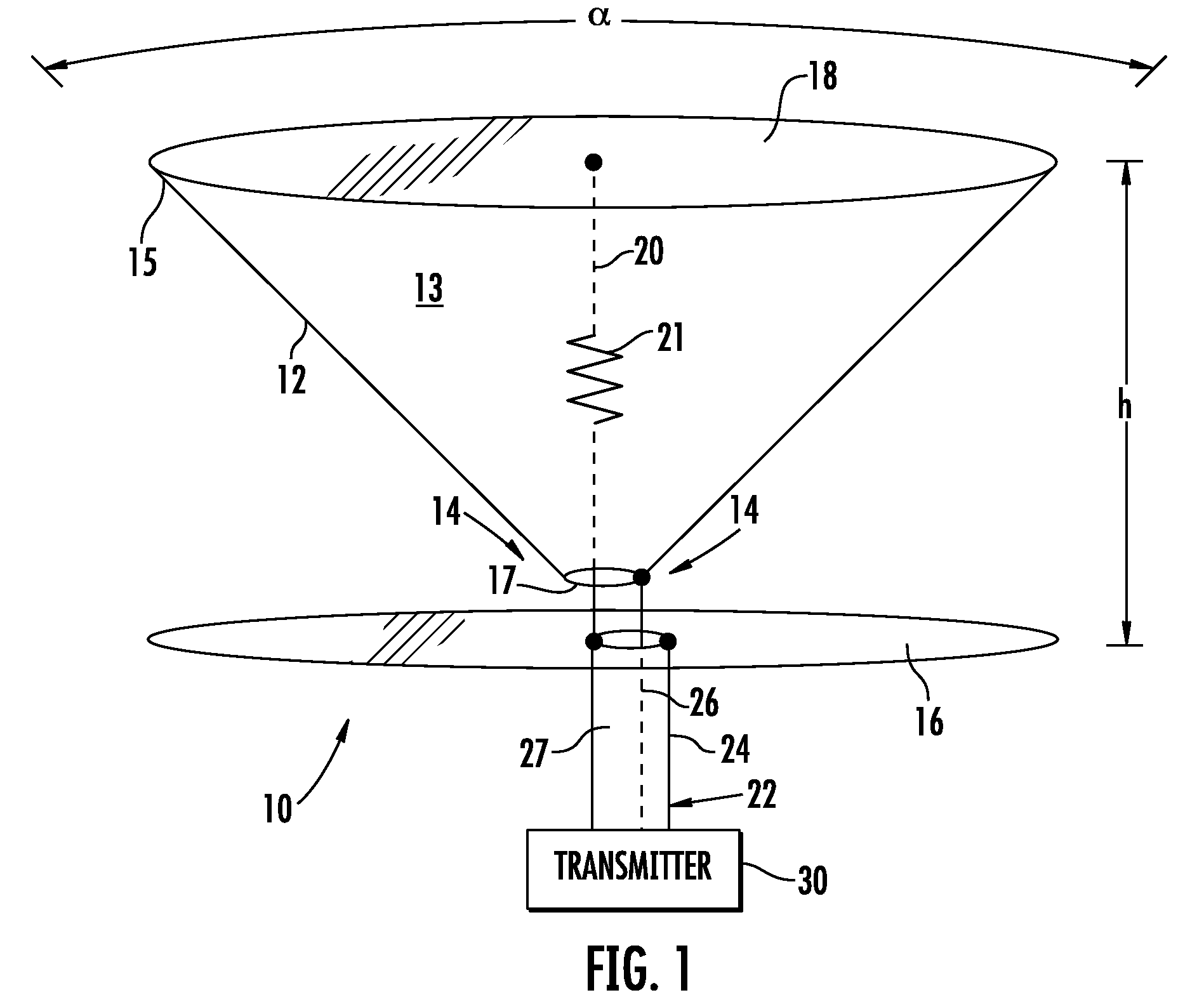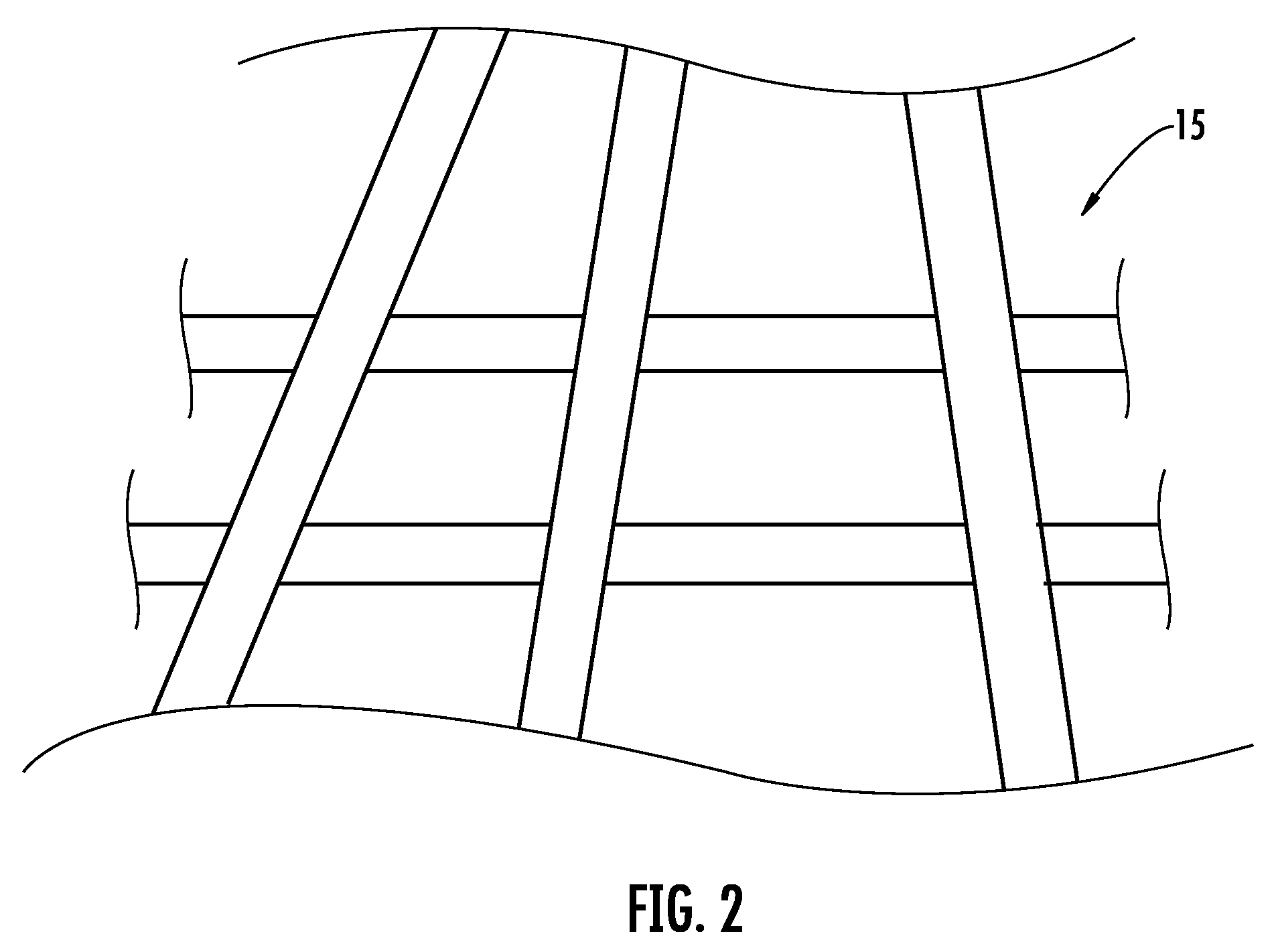Folded conical antenna and associated methods
a conical antenna and antenna technology, applied in the field of antennas, can solve the problems of multiple tuning, insufficient bandwidth, and inability to meet all antenna size-bandwidth needs, and achieve the effect of wide voltage standing wave ratio (vswr) bandwidth
- Summary
- Abstract
- Description
- Claims
- Application Information
AI Technical Summary
Benefits of technology
Problems solved by technology
Method used
Image
Examples
Embodiment Construction
[0025]The present invention will now be described more fully hereinafter with reference to the accompanying drawings, in which preferred embodiments of the invention are shown. This invention may, however, be embodied in many different forms and should not be construed as limited to the embodiments set forth herein. Rather, these embodiments are provided so that this disclosure will be thorough and complete, and will fully convey the scope of the invention to those skilled in the art. Like numbers refer to like elements throughout.
[0026]Referring initially to FIG. 1, a conical monopole antenna 10 in accordance with features of the present invention will be described. The antenna 10 may be specified, for example, as a VHF / UHF omnidirectional conical monopole antenna operating between 100 to 512 MHz, and be usable to 30 MHz or below. The antenna 10 may be referred to as being an electrically small communication antenna with broad VSWR bandwidth. Also, the antenna may be referred to as...
PUM
 Login to View More
Login to View More Abstract
Description
Claims
Application Information
 Login to View More
Login to View More - R&D
- Intellectual Property
- Life Sciences
- Materials
- Tech Scout
- Unparalleled Data Quality
- Higher Quality Content
- 60% Fewer Hallucinations
Browse by: Latest US Patents, China's latest patents, Technical Efficacy Thesaurus, Application Domain, Technology Topic, Popular Technical Reports.
© 2025 PatSnap. All rights reserved.Legal|Privacy policy|Modern Slavery Act Transparency Statement|Sitemap|About US| Contact US: help@patsnap.com



